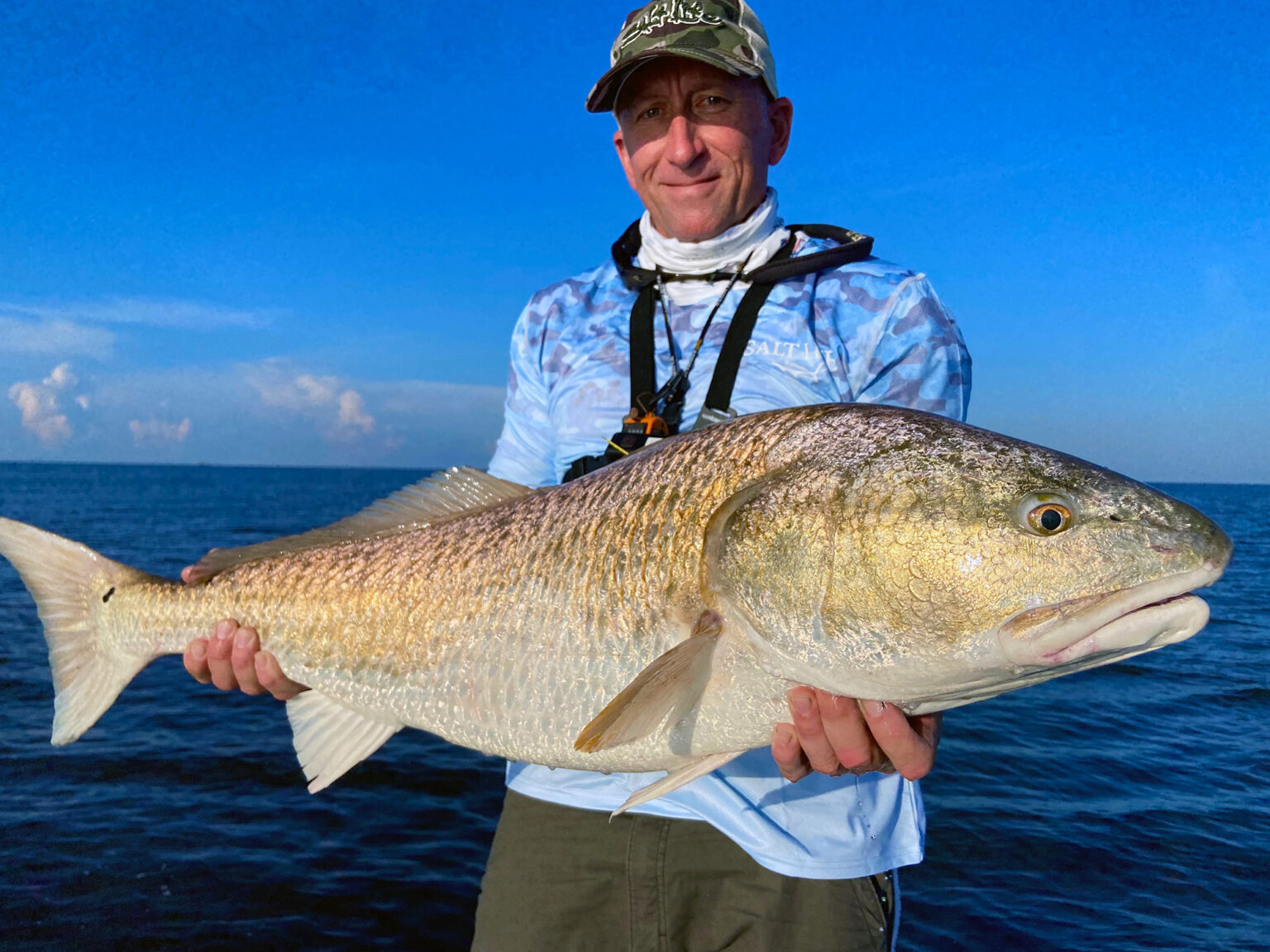The bull reds that gather on the flats in the lower Barataria Basin are impressive giants. According to Capt. Shane York, placing a cork above a paddle tail almost guarantees success. Todd Masson
Capt. Shane York is a familiar face at his local gym, but much of his body-builder physique can be credited to the annual arrival of bull redfish at a large bay close to his preferred south Louisiana port. Each late summer and into fall, mature reds swarm the flats in the lower Barataria Basin and feast on bait populations that are astonishing. York is always on hand to meet them, equipped with soft-plastic paddle tails under corks.
“You can use any lure, and they’ll bite, but that cork makes it nearly a sure thing,” he stated.
York has graciously invited me to experience the bull red frenzy the past two seasons. Last year, we launched before dawn from Myrtle Grove Marina and caught fish until we could hardly stand the thought of reeling in one more. That was by 8 a.m., and all the reds were around 40 inches.
“The smallest bull we’ve caught here this year was 35 inches,” York remarked that morning.
The author and Capt. Shane York take a selfie while both reel in bull redfish. Todd Masson
Two years ago, I severely strained my biceps hauling in fish after fish, including my personal best at 44 inches. Mature redfish spawn in deeper passes along the coast, but that’s not where York finds them when they are feeding. He seeks out large flats with a consistent depth of 3 to 4 feet that host bait; when he locates one, success is nearly guaranteed, independent of water clarity.
“We catch them out here in absolute chocolate milk,” he shared.
The run aligns with the migration of white shrimp leaving Louisiana’s marshes this time of year. York releases every bull he catches, yet if one were to examine its stomach, it would be stuffed.
Bull Red Drum Eat Speckled Trout
Capt. Shane York battles massive bull redfish along the Louisiana coast every year at this time. Todd Masson
“You’ll find plenty of shrimp, but you’ll also come across speckled trout,” he noted. “They feed on those small speckled trout.”
In fact, the trout form a key part of the bull reds’ diet; York knows he’s in the right spot when aggressive speckled and white trout are the first to pull down his cork. Many of the specks fall below Louisiana’s 13-inch minimum size limit, but some are good keepers. York is willing to keep those if his clients want to take fish home.
Often, diving seagulls reveal the locations of productive flats, so York advises staying vigilant. He recently discovered the flat that yielded so many fish for us last year.
“We were fishing one area and moving to another,” he explained. “As we crossed the flat, we spotted two large blowups beside the boat. We stopped, dropped the Power-Pole, made two casts, and immediately doubled up.”
York’s preferred color lure is black with a chartreuse tail, but he also has success with white and pure chartreuse. He will be utilizing all these colors for the upcoming months. Once the fish arrive in late July or early August, they linger for a period.
“They’ll be here really well through October or November, but you might still see some into December,” he said.
By that time, York will undoubtedly look even more toned.

